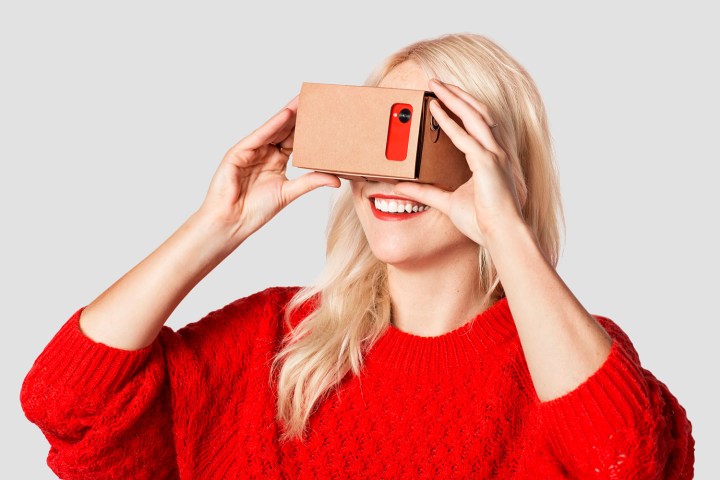
Updated on 02/11/16 by Julian Chokkattu: Added a report from The Wall Street Journal claiming that Google is planning to improve its Cardboard VR headset and introduce another virtual reality headset that doesn’t require a connection to a
Making a huge push into VR, the search giant could unveil two virtual reality headsets this year, according to the Wall Street Journal. One would be an updated version of Cardboard VR, which would use a
The second VR headset will likely be the more premium device, and would not require a connection to a
What’s more interesting is Google’s purported plan to use Movidius, Inc’s chips to track the motion of the user’s head rather than using external devices. Movidius’ mission is to bring visual intelligence to devices, so it will be interesting to see how the partnership fares.
The Wall Street Journal also reports that Google wants its upcoming headsets to work with as many Android devices as possible, so it will be “retooling” the next iteration of
For more evidence of Google’s push, RoadtoVR spotted job postings that include a hardware engineering technical lead manager, who will direct “system integration of high-performance, battery powered, highly constrained consumer electronics products,” and a PCB layout engineer, who will work on “the development and sustaining of actual products.”
The job posts do not directly lend credence to a VR headset from Google, but it is a strong hint that the company is building them. Jason Toff, the general manager of Vine, also recently returned to Google to work on virtual reality. If that isn’t enough proof that Google is starting to invest more time into VR, Clay Bavor, the vice president for product management, recently left his position to work exclusively on VR products.
The new VR headset is expected to compete with the Oculus Rift, Sony PlayStation VR, and HTC Vive VR for the commercial market, since Google mentions “high performance electronics products” in the job posting.
Google’s mention of “multiple products” in the job postings, lend credence to The Wall Street Journal’s report — that we might a VR headset that competes with Samsung’s mid-range Gear VR, as well as a high-end option.
Another division inside Google is reportedly working on the future of augmented reality, built from the remnants of the Glass team. We aren’t sure what crossover the two divisions have, if any. Google also has a significant investment in Magic Leap, an augmented reality startup that has released some impressive demos of its technology in the past few months.
Editors' Recommendations
- Watch out: Google Drive may have lost months of data
- Watch Meta demonstrate full-body VR tracking with just a Quest headset
- Apple’s AR/VR solution might require two Apple Watches to work
- Facebook unveils the Oculus Quest 2 VR headset
- Cost of Oculus Go stand-alone VR headset permanently slashed by $50


